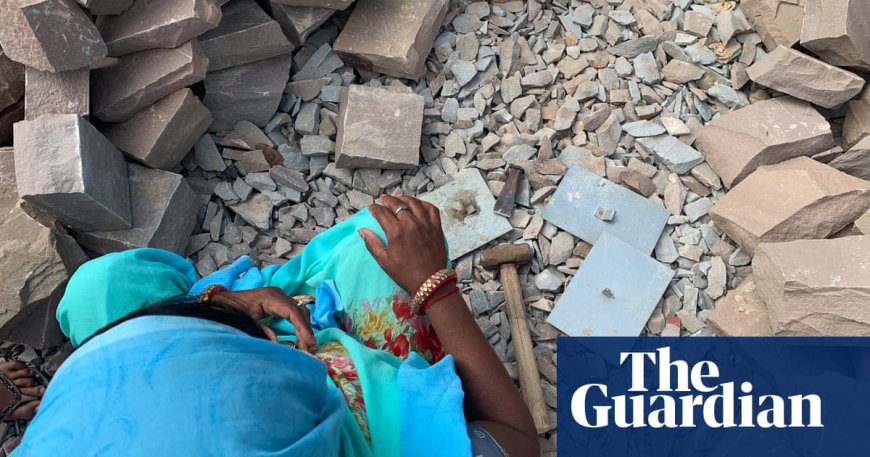How child labour in India makes the paving stones beneath our feet – podcast
How child labour in India makes the paving stones beneath our feet – podcast The Guardian

Exploitation in India’s Sandstone Industry

Despite promises of reform, exploitation remains endemic in India’s sandstone industry, with children doing dangerous work for low pay – often to decorate driveways and gardens thousands of miles away. By Romita Saluja
Sustainable Development Goals (SDGs)
- Goal 1: No Poverty
- Goal 4: Quality Education
- Goal 8: Decent Work and Economic Growth
- Goal 10: Reduced Inequalities
- Goal 12: Responsible Consumption and Production
Exploitation in the Sandstone Industry
- Exploitation remains endemic in India’s sandstone industry.
- Children are forced to do dangerous work for low pay.
- The sandstone is often used to decorate driveways and gardens thousands of miles away.
Promises of Reform
- Despite promises of reform, exploitation continues to persist.
- Efforts to address the issue have not been effective.
- More action is needed to ensure the well-being and rights of workers in the sandstone industry.
Conclusion
The exploitation in India’s sandstone industry highlights the urgent need to address the Sustainable Development Goals (SDGs). Goal 1 aims to eradicate poverty, while Goal 4 focuses on providing quality education. Goal 8 promotes decent work and economic growth, and Goal 10 aims to reduce inequalities. Finally, Goal 12 emphasizes responsible consumption and production. By prioritizing these goals, we can work towards eliminating exploitation and creating a more sustainable and equitable industry.
SDGs, Targets, and Indicators
-
SDG 8: Decent Work and Economic Growth
- Target 8.7: Take immediate and effective measures to eradicate forced labor, end modern slavery and human trafficking, and secure the prohibition and elimination of the worst forms of child labor.
- Indicator 8.7.1: Proportion and number of children aged 5-17 years engaged in child labor, by sex and age group.
-
SDG 12: Responsible Consumption and Production
- Target 12.2: By 2030, achieve the sustainable management and efficient use of natural resources.
- Indicator 12.2.1: Material footprint, material footprint per capita, and material footprint per GDP.
Analysis
The article highlights the issues of exploitation and child labor in India’s sandstone industry. Based on the content, the following SDGs, targets, and indicators can be identified:
1. SDG 8: Decent Work and Economic Growth
The article addresses the issue of child labor, which is a violation of decent work principles. SDG 8 aims to promote sustained, inclusive, and sustainable economic growth, full and productive employment, and decent work for all. Target 8.7 specifically focuses on eradicating forced labor, including child labor. The article mentions that children are engaged in dangerous work for low pay, highlighting the need for measures to eliminate child labor.
2. SDG 12: Responsible Consumption and Production
The article also raises concerns about the responsible consumption and production of sandstone. SDG 12 aims to ensure sustainable consumption and production patterns. Target 12.2 focuses on the sustainable management and efficient use of natural resources. The article implies that the sandstone industry may not be managing resources sustainably, as exploitation and low pay are prevalent. This indicates a need for improved resource management practices.
3. Indicators
The article does not explicitly mention specific indicators, but relevant indicators can be identified based on the targets mentioned:
- Indicator 8.7.1: Proportion and number of children aged 5-17 years engaged in child labor, by sex and age group. This indicator can be used to measure progress towards eradicating child labor in the sandstone industry.
- Indicator 12.2.1: Material footprint, material footprint per capita, and material footprint per GDP. This indicator can be used to assess the sustainable management and efficient use of natural resources in the sandstone industry.
Table: SDGs, Targets, and Indicators
| SDGs | Targets | Indicators |
|---|---|---|
| SDG 8: Decent Work and Economic Growth | Target 8.7: Take immediate and effective measures to eradicate forced labor, end modern slavery and human trafficking, and secure the prohibition and elimination of the worst forms of child labor. | Indicator 8.7.1: Proportion and number of children aged 5-17 years engaged in child labor, by sex and age group. |
| SDG 12: Responsible Consumption and Production | Target 12.2: By 2030, achieve the sustainable management and efficient use of natural resources. | Indicator 12.2.1: Material footprint, material footprint per capita, and material footprint per GDP. |
Copyright: Dive into this article, curated with care by SDG Investors Inc. Our advanced AI technology searches through vast amounts of data to spotlight how we are all moving forward with the Sustainable Development Goals. While we own the rights to this content, we invite you to share it to help spread knowledge and spark action on the SDGs.
Fuente: theguardian.com

Join us, as fellow seekers of change, on a transformative journey at https://sdgtalks.ai/welcome, where you can become a member and actively contribute to shaping a brighter future.







